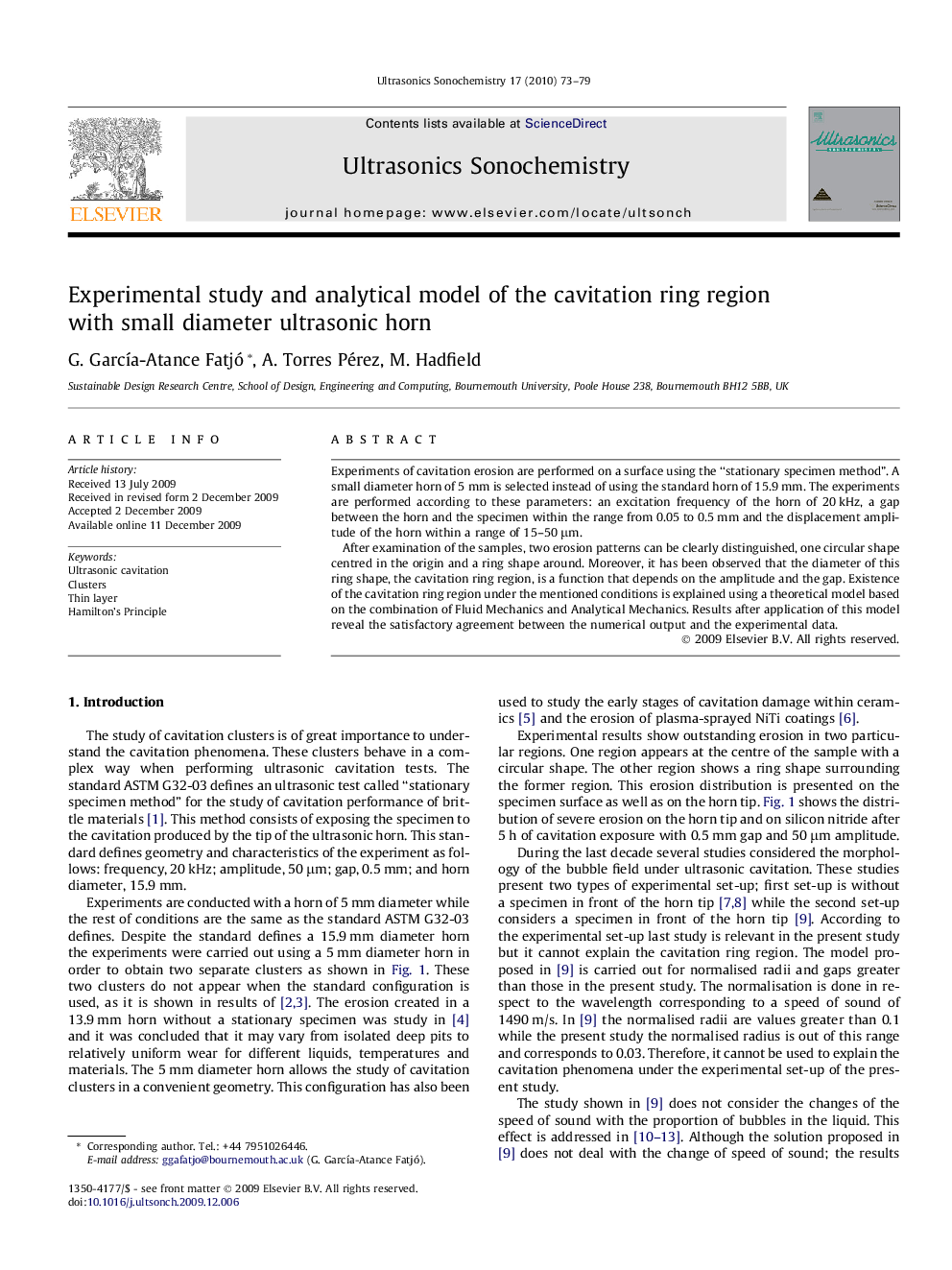| Article ID | Journal | Published Year | Pages | File Type |
|---|---|---|---|---|
| 1266370 | Ultrasonics Sonochemistry | 2011 | 7 Pages |
Experiments of cavitation erosion are performed on a surface using the “stationary specimen method”. A small diameter horn of 5 mm is selected instead of using the standard horn of 15.9 mm. The experiments are performed according to these parameters: an excitation frequency of the horn of 20 kHz, a gap between the horn and the specimen within the range from 0.05 to 0.5 mm and the displacement amplitude of the horn within a range of 15–50 μm.After examination of the samples, two erosion patterns can be clearly distinguished, one circular shape centred in the origin and a ring shape around. Moreover, it has been observed that the diameter of this ring shape, the cavitation ring region, is a function that depends on the amplitude and the gap. Existence of the cavitation ring region under the mentioned conditions is explained using a theoretical model based on the combination of Fluid Mechanics and Analytical Mechanics. Results after application of this model reveal the satisfactory agreement between the numerical output and the experimental data.
